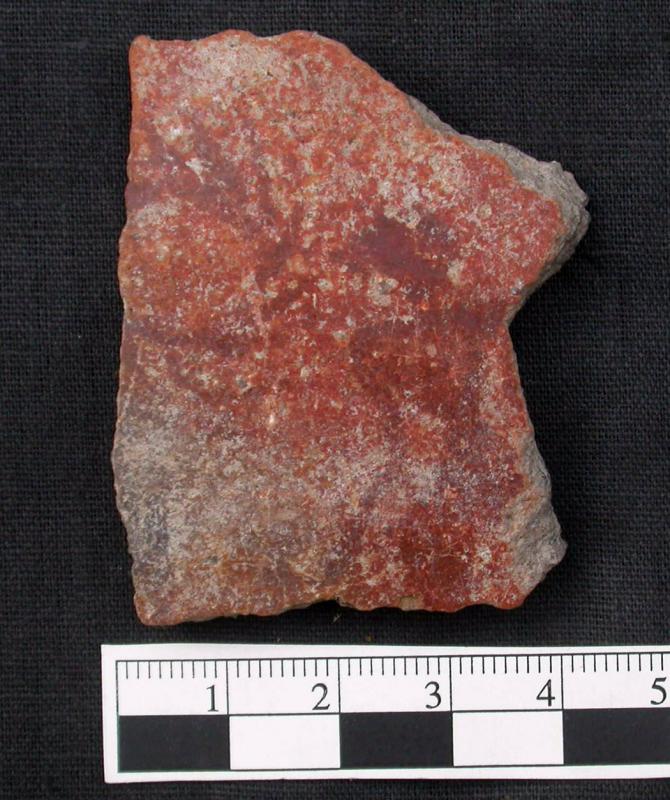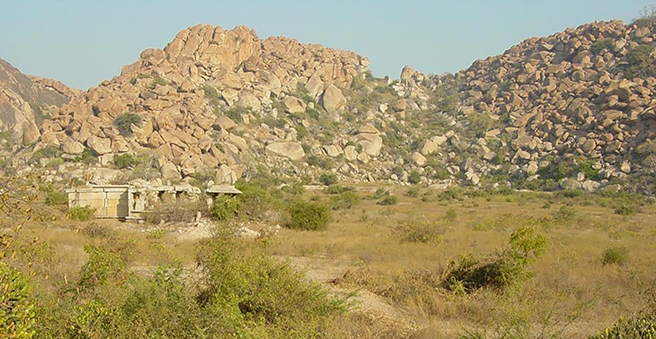Maxwell Museum Blog

Potters working in southern India during the first millennium BCE crafted finely made ceramic bowls using hand- and wheel-building techniques. Unlike later Pueblo potters in the southwest US, they rarely applied painted decoration to the vessels’ highly polished surfaces. In contrast, painted rock art is abundant in the dramatic landscape of modern Karnataka, South India where Maxwell Director Carla Sinopoli conducts her research.
Rock art can be notoriously difficult to date. Sinopoli and colleagues’ excavations in Iron Age levels (ca. 1200 -200 BCE) at the town site of Kadebakele has yielded hundreds of thousands of pottery fragments. One sherd, excavated from a deposit dating to late eight century BCE, provides a valuable clue to the dating of a nearby rock art panel.
Painted in red pigment on a polished red ware jar was a narrow-waisted “hourglass”-shaped human figure standing adjacent to a rayed circle (sun?). This figure – the only painted figurative representation documented on the more than half a million sherds our team has examined – bears a remarkable resemblance to representations of humans painted on the walls of a small shelter on the hills overlooking the settlement, allowing us to tentatively date the rock shelter as contemporaneous.
We do not know the significance of these figures to the residents of Kadebakele. However, stylized figures of human or other-than-human beings were common in rock art and stone monuments. So far, only one has been found on pottery.
Post by Carla M. Sinopoli


Images:
Top: Ceramic sherd with human figure
Below: Kadebakele painted rock shelter &
Kadebakele outcrop view from south

